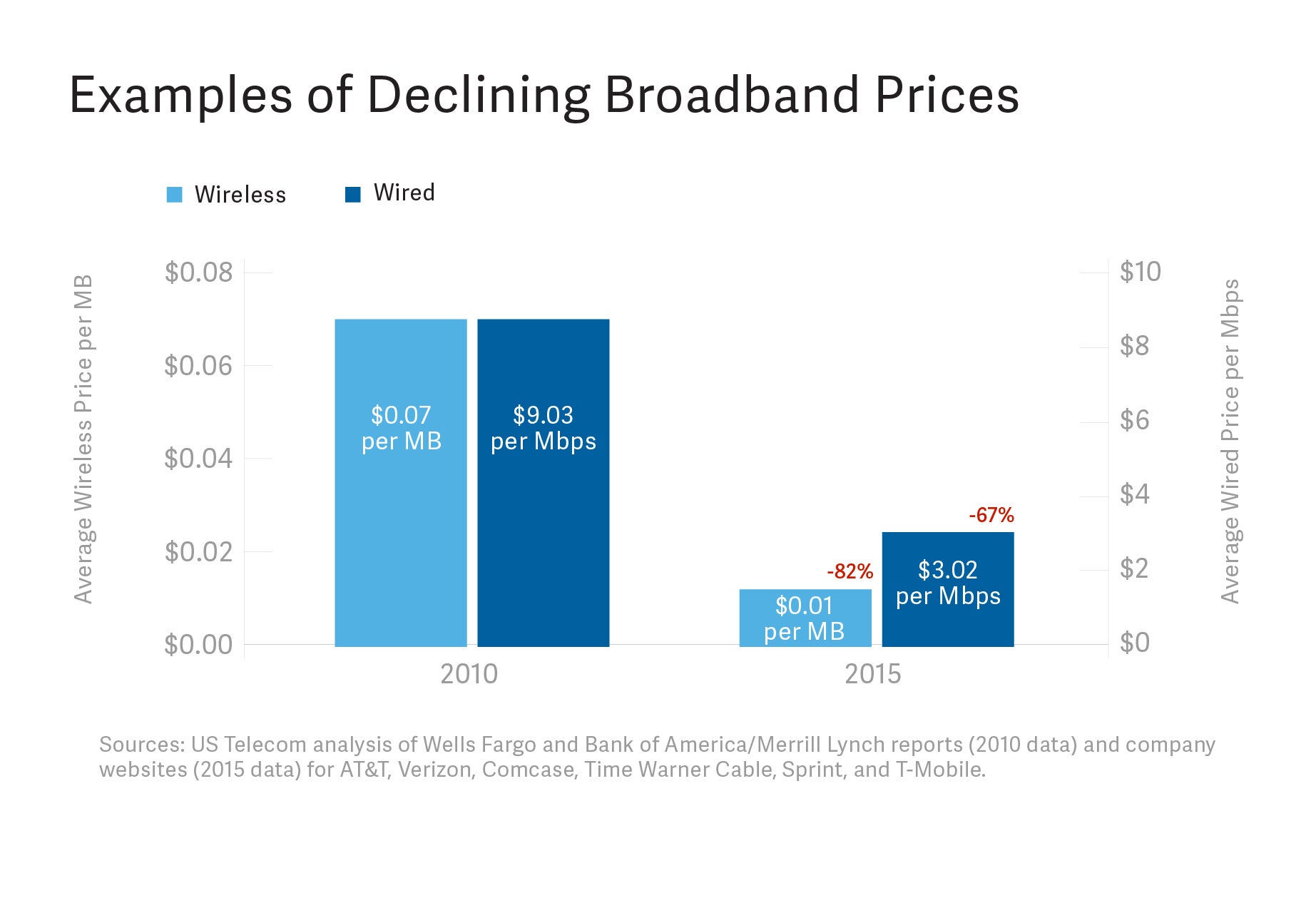You live on your phone, but chances are you still rely on fixed broadband
If you’re reading this on an internet-connected smartphone or tablet, you’re living proof that mobile connectivity has transformed the way people experience the world. That transformation is accelerating rapidly—it’s estimated that the number of global mobile broadband subscriptions will double in the next five years, from 3.7 billion to 7.7 billion in 2021.


If you’re reading this on an internet-connected smartphone or tablet, you’re living proof that mobile connectivity has transformed the way people experience the world. That transformation is accelerating rapidly—it’s estimated that the number of global mobile broadband subscriptions will double in the next five years, from 3.7 billion to 7.7 billion in 2021.
In economic terms, this rapid expansion is just as dramatic: Mobile and related industries added over $3.1 trillion in value to global GDP in 2015, a figure that includes millions of jobs in direct and indirect employment. Several factors contributed to that growth, including innovations in device technology and software, and new content formats designed expressly for consumers on the go.

But perhaps the largest mobile growth driver is investment in building and maintaining mobile broadband infrastructure: the technology, which enables users to access wireless internet via phones or portable modems, has led to rapid leaps in mobile internet market penetration around the world. From 2009 to 2013, companies in the mobile ecosystem funneled nearly $1.8 trillion in private investment into infrastructure, research, and development.
Given these statistics, it’s no surprise that mobile broadband has come to dominate the conversation about connectivity, and that mobile investment is a top priority for the telecom and tech industries. Still, fixed broadband remains an important—and necessary—part of consumers’ lives, largely because many people see fixed broadband and mobile broadband as complementary, not interchangeable, services.
Think about it: managing a handful of tasks via a connected smartphone is easy, but telecommuting all day from a mobile device could become challenging, especially when dealing with data-intensive projects, multiple files, and complex images. And while mobile broadband technology has reached a high level of sophistication, there are still some uses for which fixed broadband offers stronger performance, such as video conferencing and high-definition video streaming, or even education technology applications for students and teachers.
For the small percentage of consumers who do treat mobile and fixed broadband as substitute goods (that is, exclusively accessing the internet via mobile broadband), economic factors may be influencing that choice. Young, low-income consumers are less likely than others to own computers over cheaper mobile devices. Their higher propensity for a more mobile lifestyle makes a mobile plan especially convenient.
While mobile broadband subscriptions are growing more quickly, fixed broadband subscriptions continue to increase. 2015 data gathered by the International Telecommunication Union showed that there were over 102.5 million fixed broadband subscriptions in the United States, up from 97.8 million in 2014. It’s also estimated that there will be 1 billion worldwide fixed broadband subscriptions by 2019. Despite differences in growth rates, fixed broadband as a percentage of total internet use remains relatively consistent, thanks in part to the quality of experience it offers.
What’s more, consumer prices for both fixed and mobile broadband services have been in steady decline, even as performance and speed have increased. On average, the price per megabit per second (Mbps) for fixed broadband dropped 67% between 2010 and 2015, and the price per megabyte (MB) for mobile broadband fell 82% in the same time.

Demand for mobile broadband shows no signs of slowing, but ultimately, most consumers want to have it all: fast, reliable broadband at home, in the office, in the car, and anywhere else they happen to be, using any device they choose. In order to satisfy this demand, infrastructure and technology need to keep up. And while it’s difficult to predict the future technology we’ll access on these networks, it’s clear that it will require sustained investment in building and maintaining our broadband infrastructure, and ultimately developing the next big broadband innovation—whatever it may be.
Building a connected community requires the vision and commitment of businesses like AT&T, whose investments in both mobile and fixed broadband infrastructure have profound benefits for hundreds of cities and towns across the nation. For more information on AT&T’s innovative broadband projects, visit their Innovation Blog and Project AirGig page.
This article was produced on behalf of AT&T by Quartz creative services and not by the Quartz editorial staff.